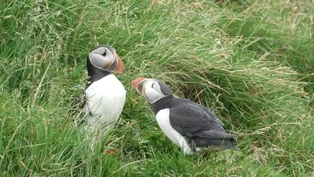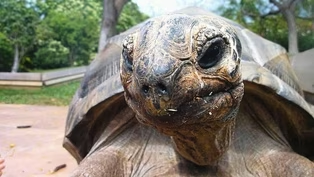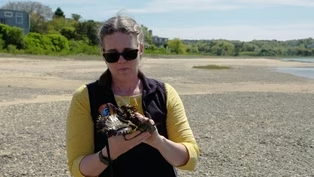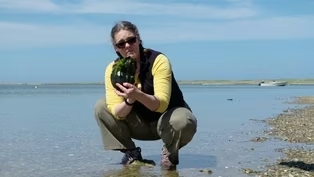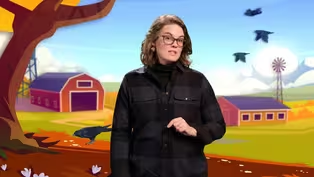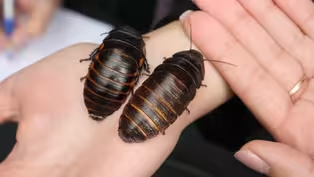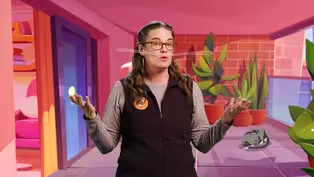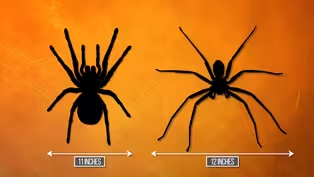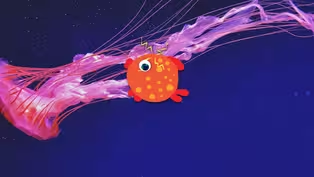But Why – A show for curious kids
How do horses gallop?
10/24/2025 | 3m 19sVideo has Closed Captions
How do horses gallop? Asks Parker from Wisconsin.
To answer this question, our team went all the way to Iceland to speak with Sonja Noack, the owner of Hestasnilld Riding School in Mosfellsbær, Iceland! She showed us all sorts of different gaits that a horse is capable of, including two special ones that make Icelandic horses famous.
Problems playing video? | Closed Captioning Feedback
Problems playing video? | Closed Captioning Feedback
But Why – A show for curious kids is a local public television program presented by Vermont Public
But Why – A show for curious kids
How do horses gallop?
10/24/2025 | 3m 19sVideo has Closed Captions
To answer this question, our team went all the way to Iceland to speak with Sonja Noack, the owner of Hestasnilld Riding School in Mosfellsbær, Iceland! She showed us all sorts of different gaits that a horse is capable of, including two special ones that make Icelandic horses famous.
Problems playing video? | Closed Captioning Feedback
How to Watch But Why – A show for curious kids
But Why – A show for curious kids is available to stream on pbs.org and the free PBS App, available on iPhone, Apple TV, Android TV, Android smartphones, Amazon Fire TV, Amazon Fire Tablet, Roku, Samsung Smart TV, and Vizio.
Providing Support for PBS.org
Learn Moreabout PBS online sponsorshipMore from This Collection
Answering your favorite questions about animals and insects.
Are there animals or plants that can live forever?
Video has Closed Captions
Are there animals or plants that can live forever? Asks Eleanor from New York. (2m 25s)
Why are horseshoe crabs called crabs?
Video has Closed Captions
Why are horseshoe crabs called crabs? Asks Eva from Canada. (1m 54s)
What's cool about cockroaches?
Video has Closed Captions
Why are cockroaches so yucky? Asks Rosie from China. (2m 2s)
Why do T-Rexes have small arms?
Video has Closed Captions
Why do T-Rexes have small arms? Asks Grigor from Switzerland. (2m 1s)
Video has Closed Captions
Why do cats have whiskers? Asks Bryce of Georgia. (1m 59s)
What is the biggest spider in the world?
Video has Closed Captions
What is the biggest spider in the world? Asks Mia from Massachusetts. (1m 28s)
Video has Closed Captions
Do all jellyfish sting? Asks Clinton from California. (1m 51s)
Why do dolphins jump in the air?
Video has Closed Captions
Why do dolphins jump in the air? Asks Nancy from England. (1m 48s)
Providing Support for PBS.org
Learn Moreabout PBS online sponsorshipHorses were first brought to Iceland over a thousand years ago by Viking settlers and they've been important to this country's culture and history ever since.
Icelandic horse are also a very distinct breed.
Because of the island's geography as an isolated nation and because of the rules around importing and exporting horses, these Icelandic horses have developed basically in isolatio since the time of the Vikings.
Icelandic horses are known for having short legs, a sturdy build and a nice thick coat for the winter.
How do horses gallop?
I'm at Hestasnilld, a riding school in southern Iceland with Sonja Noack, the owner of Hestasnilld.
Nice to see you.
Nice to see you.
Okay, so horses actually have several different ways they can move.
Can you walk us through the different paces that horses have?
Yeah.
Okay.
They have walk, which is the slowest gait.
It's four-beated.
And the horse is basically, you know, starting when you think about how it moves, it's starting with the left hind leg, the the left front leg, right hind leg, right front leg, and it walks through it.
And it's always two to three feet on the ground.
And then they have a trot.
What's a trot?
A trot it's they are having a flying moment in between and they use their diagonal feet together and then they go like this and then we'll jump to the air and then like this and jump to the air.
So there's a time at which no feet are on the ground.
Yes.
Okay.
And the gallop?
The gallop is three-beated and there is right and left gallop.
Then we will start with the right hind leg.
And then this two diagonal feet come in and as last the left one.
And then it's flying.
And it's like three-beated.
For many horses, that's the fastest gait they have, the gallop.
But Icelandic horses are famous for sometimes having two more gaits.
Tell us about those.
It's tölt and a flying pace.
Tölt is four-beated.
It's the same as walk.
the feet move the same.
And it's always one or two feet on the ground.
So it's very smooth.
And you are just, it's going like sitting on a sofa and, it can go from slow to very fast.
And, sometimes we have a four-gaiter.
Then they have these four gaits.
When you have a five-gaited horse, they have flying pace.
And that is then when the horse moves almost like a camel but faster.
So a camel is moving lateral movement.
It's like these two together flying and then these two together.
And the horse will go laying down with the head and it runs really fast.
It's pretty amazing to see Icelandic horses at pace.
However, they're most famous for that tölt.
And some Icelanders say that people can even hold a glass of ice water without spilling it while they're riding a horse in tölt.
To make sure you never miss But Why, like this video and subscribe to our channel.
And find out more at butwhykids.org.

- Science and Nature

Explore scientific discoveries on television's most acclaimed science documentary series.

- Science and Nature

Capturing the splendor of the natural world, from the African plains to the Antarctic ice.












Support for PBS provided by:
But Why – A show for curious kids is a local public television program presented by Vermont Public
